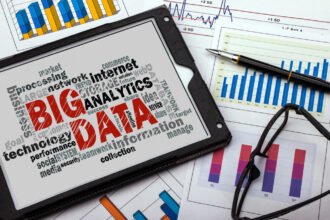 Big data has become an integral part of the business world as more and more companies learn to utilize technologies that better harness and interpret newly available data. Analyzing all that data is now an important part of business operations, and it requires significant time and resources to better understand and apply the solutions that big data offers.
Big data has become an integral part of the business world as more and more companies learn to utilize technologies that better harness and interpret newly available data. Analyzing all that data is now an important part of business operations, and it requires significant time and resources to better understand and apply the solutions that big data offers.
 Big data has become an integral part of the business world as more and more companies learn to utilize technologies that better harness and interpret newly available data. Analyzing all that data is now an important part of business operations, and it requires significant time and resources to better understand and apply the solutions that big data offers. One developing technology that is greatly simplifying this process is virtualization, specifically data virtualization, which is allowing businesses in increase their value while turning big data analytics into an important enterprise tool.
Big data has become an integral part of the business world as more and more companies learn to utilize technologies that better harness and interpret newly available data. Analyzing all that data is now an important part of business operations, and it requires significant time and resources to better understand and apply the solutions that big data offers. One developing technology that is greatly simplifying this process is virtualization, specifically data virtualization, which is allowing businesses in increase their value while turning big data analytics into an important enterprise tool.
Big Data Challenges
Businesses face some significant challenges when it comes to integrating big data analytics. For one thing, data can be collected and analyzed in many different forms depending on the way it is measured and the source it comes from. With more sources stemming from web services, networks, and cloud computing, the diversity of the data is growing more complex by the day. Another big challenge is the more complicated way data is accessed. There are now a much larger variety of protocols through which analysts must be able to access the data. Perhaps one of the biggest challenges for big data analytics is the sheer volume of data now being collected. The larger data sets require analysts to work with data wherever it is found instead of just from one place. Without access to this big data, businesses would find it difficult to create value for their companies.
Why Turn to Data Virtualization
Data virtualization is one way many businesses are taking on these challenges. Put simply, data virtualization is a data integration approach allowing an application to retrieve and manipulate data without needing to know how the data is stored or formatted. It essentially separates the physical source of the data from possible applications. Sorting through big data can be a complicated process since it is usually spread across many nodes, tiers, and clusters, but data virtualization makes the process much easier.
Agility
Data virtualization brings many advantages when dealing with big data analytics. Many of the advantages come down to one goal in mind for businesses: increase their agility in handling and analyzing the data they’re collecting. Data virtualization basically gives businesses almost instant access to as much data as they want in whatever form they want. In essence, data virtualization simplifies the access to the data while also simplifying the appearance of that same data. In one example, a major crop insurer used data virtualization to expose the big data it had collected and integrated the data with the company’s other systems. Doing this allowed the insurer to relay important information to its sales team about forecasts, agents, and sales numbers. These complex reports were developed faster and used fewer resources. By giving greater access while integrating data across multiple sources, data virtualization allows businesses to respond to the data much more quickly.
Reduce Errors
There are other advantages associated with data virtualization. One big positive deals with how virtualized data is isolated from other virtualized data. This isolation can reduce the risk of data errors since there is less movement of data across different systems and sources. It can also prevent data failure or corruption. If one source of data fails, that will have no effect on the other sources since they are considered separate entities.
Cut Down on Processing Time
Data virtualization is also leading to faster processing times for analyzing data. It improves the use of big data by optimizing queries that businesses make about the data, providing for real-time capabilities for adopting big data for a business’s operations. By giving businesses real-time information from their analytics, they’re more capable of responding to what the data tells them. This can include identifying new opportunities in new markets, identifying fraud, personalizing the customer experience, and reducing costs.
Both big data and data virtualization have been useful tools for businesses for years now, but only recently have they been used together to make a business more efficient and effective. As companies learn to integrate both tools, the costs of implementation will continue decreasing and businesses will be able to respond to data challenges quickly. If data virtualizatin still isn’t your there there are virtualization training courses online you can take to help make sense of this new and exciting technology.
Image Source: Pixlr









